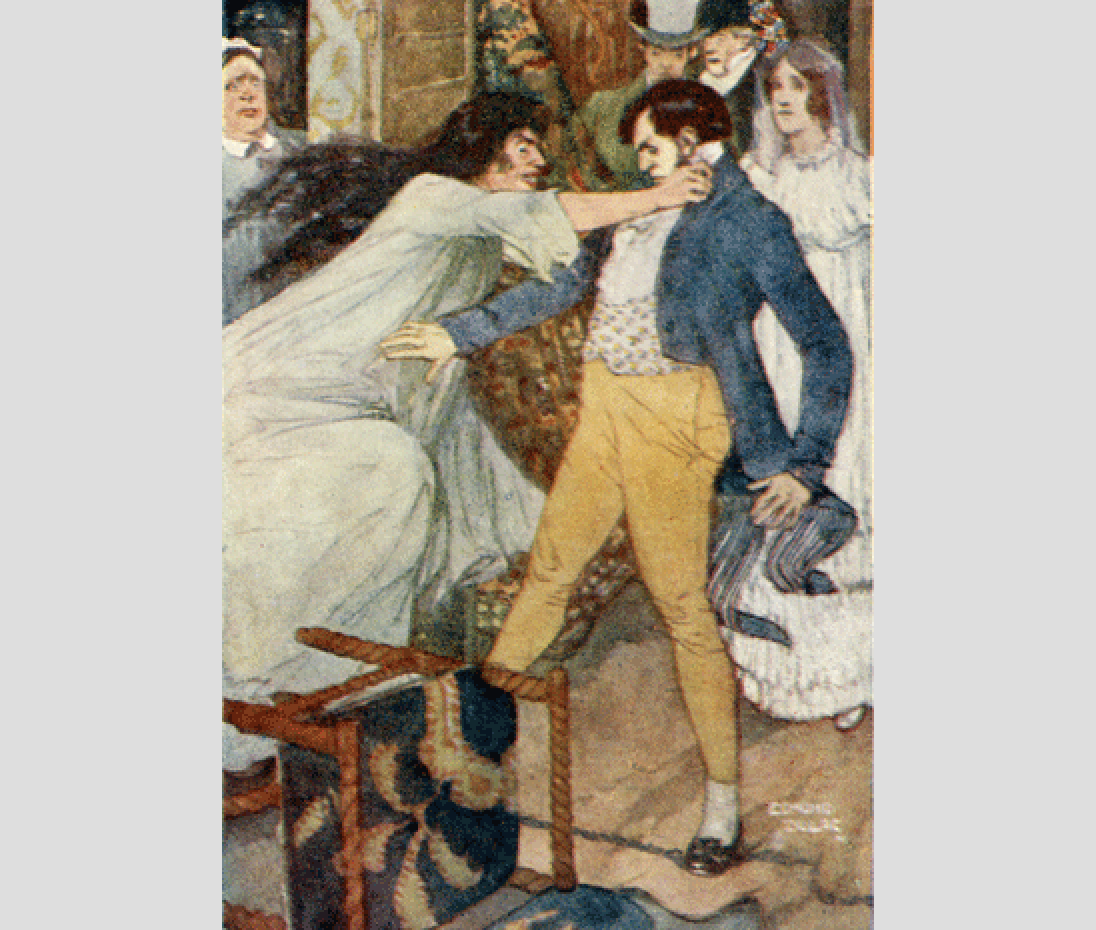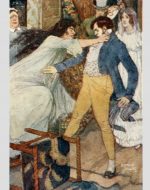Created by Ellen Turpin on Tue, 11/17/2020 - 01:03
Description:
Case Description:
Edmund Dulac, "Bertha Attacking Rochester," Jane Eyre, Dent edition of Novels of the Brontës, 1905
This is a depiction of a scene in Jane Eyre in which Jane and Rochester's wedding is interrupted by news that Rochester already has a wife, Bertha, that he has locked in the attic of Thornfield. In this particular scene, Rochester has lea Jane and Mr. Mason up to the attic to justify holding his wife hostage due to her "madness", saying, "I invite you all to come up to the house and visit Ms. Poole's patient, and my wife! You shall see what sort of a being I was cheated into espousing, and judge whether or not I had a right to break the compact, and seek sympathy with something at least human." (Brontë, 262) In this image, Bertha is depicted as promised, a savage "being", while Jane appears prim and proper, still in her wedding attire. Dressed up in her white dress and veil, Jane here can represent the pure and naive view of a newlywed looking upon her soon to be husband's altercation with his previous wife, a grim exchange between longtime spouses that could represent a more cynical view of marriage, specifically what it's implications are for the wife. James Hammerton in his essay, “Victorian Marriage and the Law of Matrimonial Cruelty”, states of marriage in the Victorian Era, “A strict law of patriarchal supremacy was regularly upheld as the central principle governing marital relations. In effect these homilies constituted a working judicial definition of patriarchy, emphasizing the ultimate benevolent sovereignty of husbands and humble submission of wives” (Hammerton, 274), which shows the unequal nature of marriage in the Victorian Era which women were trapped by gender roles and unable to express free will, much like the physical attic Bertha is trapped in throughout the novel.


